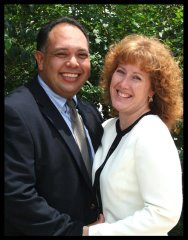Dell Yearling, 1998
ISBN 0-440-41946-8
Summary:
A boy's bad luck (caused by his "no-good-dirty-rotten-pig-stealing great-great-grandfather") lands him in a prison camp for wayward boys. As the boys dig holes in the desert for the warden, they begin to wonder if perhaps they are digging for more than character building. As the story flashes back and forth a hundred ten years, the reader begins to realize that Stanley Yelnats' "bad luck" may actually be an opportunity to change his destiny.
Critical Analysis:
Sachar manages to write an incredibly intricate story that spans several generations and two continents, although the reader does not begin to understand the twists and turns for several chapters. Little by little, he reels out history until it becomes obvious that the characters in the current story are offspring of ones in the history.
On one level, Holes is a story of a teenage boy who, through a combination of bad luck and bad choices, ends up facing death in the Texas desert. As Stanley struggles to save a friend, he comes to realize that he is not just a fat kid with no backbone; instead, he recognizes that he has strength, intelligence, and determination. In struggling to save his friend, Stanley also saves himself.
On another level, Stanley is correcting a flaw in destiny created by his great-great grandfather. It is not coincidence that "the great-great grandson of Elya Yelnats carried the great-great-great grandson of Madame Zeroni up the mountain." Each character in history leaves a legacy that somehow aids the two boys in repairing the flaw.
While the tale may not be particularly realistic, it's not meant to be. The reader simply gets lost in the story and waits anxiously to find out what unexpected turn the plot will make next.
Review Excerpts:
"Sachar has written an exceptionally funny, and heart-rending, shaggy dog story. . . . With its breadth and ambition, Holes may surprise a lot of Sachar fans, but it shouldn't. With his Wayside School stories and--this reviewer's favorite--the Marvin Redpost books, Sachar has shown himself a writer of humor and heart, with an instinctive aversion to the expected. Holes is filled with twists in the lane, moments when the action is happily going along only to turn toward somewhere else that you gradually, eventually, sometimes on the last page, realize was the truest destination all along. . . . We haven't seen a book with this much plot, so suspensefully and expertly deployed, in too long a time."
Roger Sutton, The Horn Book, September/October 1998, v. 74 no. 5
"Sachar has cunningly crafted his fiction, precisely placing snippets of historical backstory within the chronicle of Stanley's travails, so that the focus of the book is the coming together and resolving of the manifold strands of karma. . . . Sachar's dry, wry tone assists in making the book's aim something other than gritty realism; though there is indeed wicked villainy and triumphant virtue, the point is less the struggle of the individual characters than their place in the working out of the larger patterns."
Deborah Stevenson, Bulletin of the Center for Children's Books, September 1998, v. 52 no. 1
Connections:
- Calculate the volume of a 5-foot deep, 5-foot diameter hole
- Research poisonous animals that live in the deserts of the U.S.
- What is a palindrome? What other words, names, and phrases can you think of that are palindromes?
- What is destiny? Research the fates from classical mythology.
